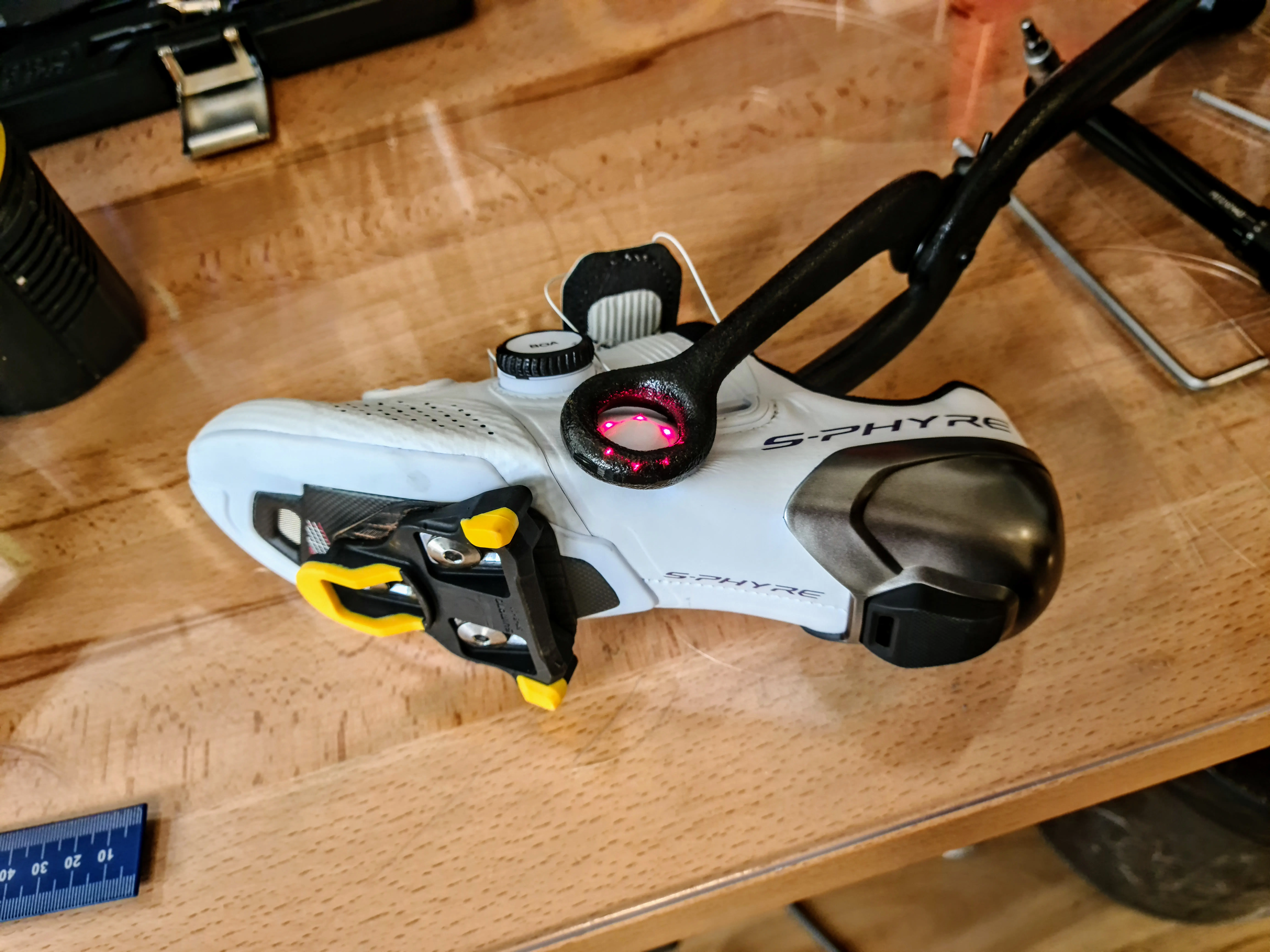Cycling shoes and, more specifically, which cycling shoes could work for me?
What are the main differences between a triathlon shoe and road cycling shoes?
The most significant differences between road and triathlon-specific shoes are apparent: the retention systems used by both and, of course, the stability provided by a road cycling shoes design. A road cycling shoes retention system is built for stronger foot retention and, in turn, better stability on the foot thanks to more straps and usually a stiffer heel cup and stiffer material construction.
Road cycling shoes will typically be a little warmer overall and retain water a little longer over the open structure of a triathlon shoe. Triathlon cycling shoes will also have a softer heel cup, arguably allowing for a better entry into the cycling shoe, but this is only sometimes the case. The construction of most triathlon shoes is also significantly open to improving ventilation.
Which one is more reasonably constructed from an ergonomic/biomechanic point of view? Why?
The better the shoe can control the foot in the cycling shoe, the more effective the force to the pedal can be. Stability and rigidity in material choices allow for more effective force application. What could this mean? It means the foot has better potential to perform work. Is it always so? No. You need to also start by building a foundation under the foot which means always beginning with a properly built insole. Second, the cleat setup and correct rotation are also crucial in helping to maintain pedalling stability and prevent overuse injury.
Why do some triathlon pros wear road cycling shoes even in competitions?
Most of the reason why you see many pros using road cycling shoes in competitions is for, if nothing else, more performance from their equipment and increased foot retention in the shoe, even if they sacrifice a little with transition time on and off the bike.
What about mountain bike shoes? Can they be worn in competitions as well? Also long-distance-races? Why (not)?
People also wear mountain bike shoes for triathlon. This usually happens with beginners new to the sport and/or athletes needing more confidence putting their shoes on while already on the bike.
Usually, people wearing mountain bike shoes will put them on in the transition zone and then run in them to the start of the cycle instead of running barefoot with the shoes already on. The downside of wearing mountain bike shoes is probably the most significant factor for not wearing them in competition would be the weight penalty.
For the most part, you can easily give up 100 grams per shoe very quickly, from a road shoe to a mountain bike shoe which over a long distance event can cost a significant amount of energy usually needed for a run.
Why is the sole of triathlon cycling shoes slightly lifting in the toe area? Is this a good idea?
Both road and tri shoes are usually produced out of the same sole mold for the sake of production cost. A slightly elevated toe in the shoe’s sole helps activate the foot’s windlass mechanism to aid in the propulsion phase of the pedal stroke. There is more to it than simply this; in general, it can help with performance.
Are carbon soles always a better choice than synthetic soles? Why (not)? Carbon soles or, better worded, stiff soles can be perfect for performance. Why carbon is used in the construction of the shoe is simply strength to weight can be very good.
The stiffness of the shoe sole itself, especially in length, provides better performance mechanically as the energy is better transferred to the pedal. More complex sole construction and more premium carbon usage also help with a torsional deflection in the sole and again improve performance and minimize losses in torque at the pedal.
In triathlon, where the overall torque profile is smoother and more even at lower peak loads, this impacts performance less, but it still has the potential to affect the performance.
An argument not to use carbon and to look to shoes utilizing nylon composites can be for extra durability to the sole if you tend to walk more in the shoes. This applies to not only triathletes but cyclists in general.
Why do some athletes’ feet go numb or start itching after a while in (triathlon)bike shoes?
This could be explained several ways, but a few of the most common ways is too much movement in the shoes if the shoe is too big and the foot is too mobile or too compressive with a shoe too small compressing the toes. The most common of problems is Morton’s neuroma, a nerve compression condition usually radiating from between the 3rd and 4th metatarsals. A properly functioning insole of the right material density and adequately supporting the heel, arch, and forefoot usually helps with immediate effect. Material choice providing good dampening properties while providing rigid support work best and can be highly adaptable in the shoe. The interface between the shoe sole and the foot is critical. Offloading the pressure area can also be hugely beneficial, and getting the cleat mounting point away from the metatarsals can aid in reducing recurrence and inflammation in these problems.
How should the perfect triathlon-bike shoe be designed to get maximum comfort and minimum loss of power transmission?
This follows from the previous question but a shoe that fits well with a stiff sole will provide the athlete with the best outcome. A mechanism to hold the shoe level on the bike by the usage of a small strap system adds convenience to competition usage, and wider fitting velcro closures will provide the foot with the best retention while allowing the best ease of use.
How can athletes check whether the shoe fits their needs already in the bike shop?
Sure, traditionally, bike shops paid less attention to having a good selection of sizing inventory, but this has dramatically improved over the last few years. A good shop can provide you with 2-4 models/widths/sizes choices to give you the best option. If you use an insole, bring it with you or ask the shop if they have opportunities to test different types of off-the-shelf insoles.
An insole is critical to a good fit, so make sure the shop can help you. Minor pressure points in the shoe can be adjusted. Still, the foot should generally have an excellent overall even pressure and enough adjustment range in the straps to secure the foot correctly.



Recent Comments